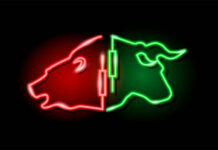Markets
Fed Chair Powell’s comments at the IMF’s annual research conference echoed through today’s trading session amid an empty eco calendar. He provided several hawkish accents to the same underlying message from the early November policy meeting. In doing so, he managed to push back against the (rate) correction that followed so far this month. First, he argued that the easy disinflation gains are over, warning that getting back inflation to the 2% target from current levels will be a much tougher challenge and “a long way to go”. This is a warning that policy rate cut bets in Q2 2024 seem premature. The Fed won’t be fooled by monthly head fakes, keeping policy restrictive until they are absolutely sure that inflation will return to the 2% target. Second, if it becomes appropriate to tighten policy further, the Fed will not hesitate to do so. The US central bank walks a tightrope between overtightening and doing too little in case of feeling too comfortable by a few months of good data. An additional rate hike doesn’t seem to the preferred scenario for the moment but the Fed is attentive to the risk that stronger growth could undermine further progress in restoring balance to the labour market and in bringing inflation down. Finally he touched on the topic of tighter financial conditions, Powell said that the Fed would not be ignorant to a significant tightening but that the effect on policy would largely depend on how long the market move lasted. German Bund yields had some catching up to do compared with yesterday’s US yield increases. They currently add 2.8 bps (30-yr) to 5.5 bps (5-yr) with the belly of the curve outperforming the wings. Intraday gains had been double these amounts though with momentum fading after 10-yr yields failed to take out the week tops in Germany (2.76%) and the US (4.67%). The trade weighted dollar’s comeback bumped into the 106 big figure with EUR/USD treading water near 1.0680. European stock market currently lose 0.5%-1%, but intraday losses had been bigger. From a technical point of view, both European (EuroStoxx50) and US (S&P 500, Nasdaq) indices failed to take out October tops and breaking the ruling sell-on-upticks pattern. Sterling initially avoided more weakness on a flat Q3 GDP print (vs -0.1% Q/Q), but details didn’t provide much comfort. Add the risk-off market climate and you and up with EUR/GBP testing the 0.8754 October top. We hold our view for a bullish break in the FX pair.
News & Views
Czech inflation jumped from 6.9% to 8.5% y/y in October. Given the mere 0.1% m/m increase, the reacceleration was exclusively due to last year’s low comparison base, when a sharp decline in prices for household electricity (energy savings tariff) was recorded. The monthly increase was mainly driven by seasonally more expensive clothing and higher food prices, while housing costs fell thanks to lower electricity, gas and heating prices. The headline figure topped the Czech National Bank’s 8.3% Autumn forecast but core inflation came in slightly lower than expected (4.3% vs 4.2% actual value). Commenting the numbers, the CNB said the latter reflected a “fading of growth in prices of foreign inputs and a cooling of domestic demand.” The CNB isn’t worried about this headline uptick. The aforementioned base effect drops out in January 2024 and will prompt a reading close to the 2% target. The Czech koruna initially extended minor gains before paring them again. EUR/CZK is currently trading slightly weaker around 24.52. Front end Czech swap yields rose in a kneejerk move but are now down 5 bps on the day. The numbers confirm KBC Economic’s view of the CNB starting the cutting cycle in December with a 25 bps move.
Price pressures in Hungary returned into the single digits for the first time since April 2022. The 9.9% y/y increase in October was a sharp drop from the 12.2% reading the month before and was helped lower by a negative 0.1% m/m outcome. Consensus stood at a 0.3% m/m and 10.4% rise. The Hungarian central bank (MNB) core inflation estimates eased too but all of them remained (well) above 10%, varying between 10.9% and 11.9%. The MNB recently lowered the policy rate by a more-than-expected 75 bps to 12.25%. Additional rate cuts will follow but their size is determined by the disinflationary process and the Hungarian forint. As the former went more swiftly and the latter even appreciated to the strongest level in three months after today’s numbers (EUR/HUF 377.3), there’s a real possibility the MNB is readying a 100 bps cut later this month. Money markets price in such a move at the two remaining policy meetings of the year. Hungarian swap yields tumble more than 10 bps at the front of the curve.












